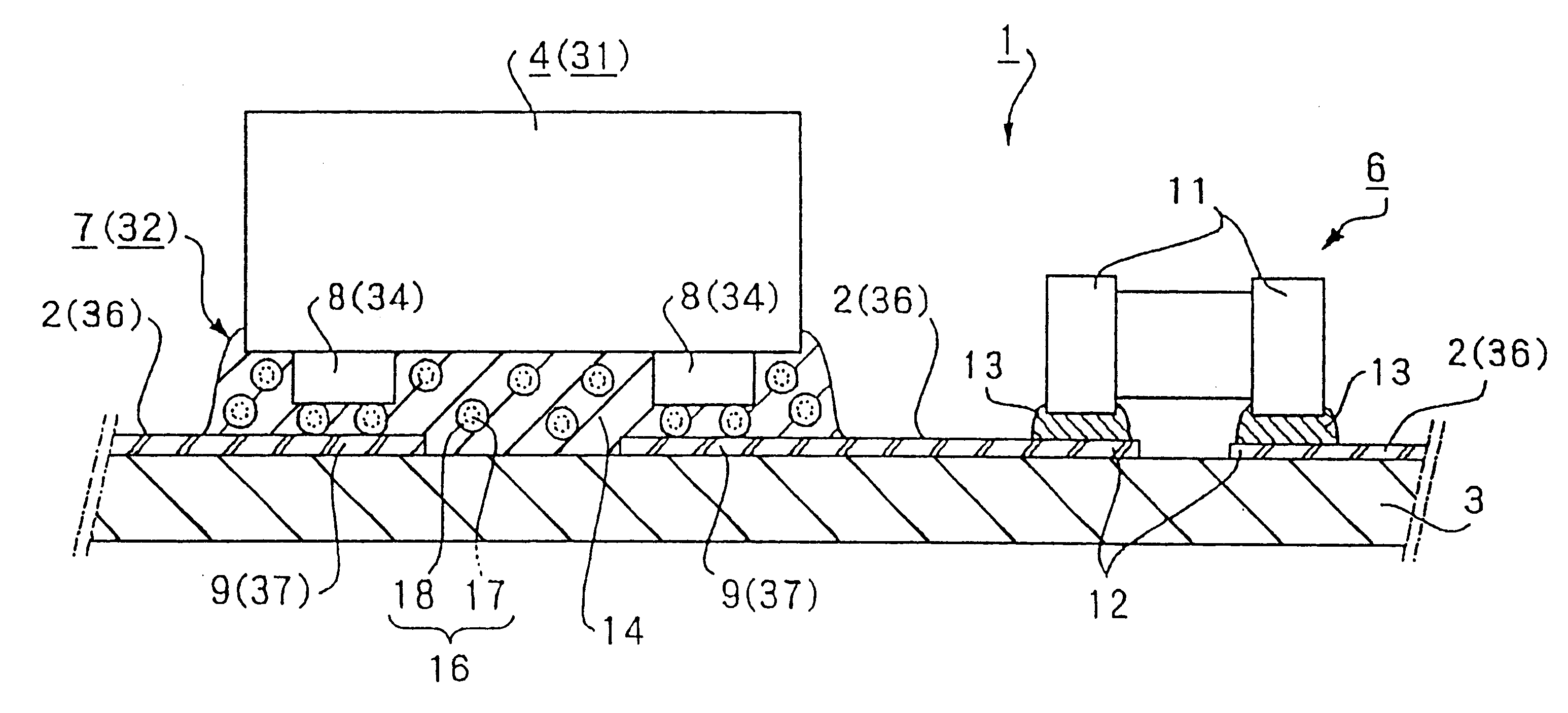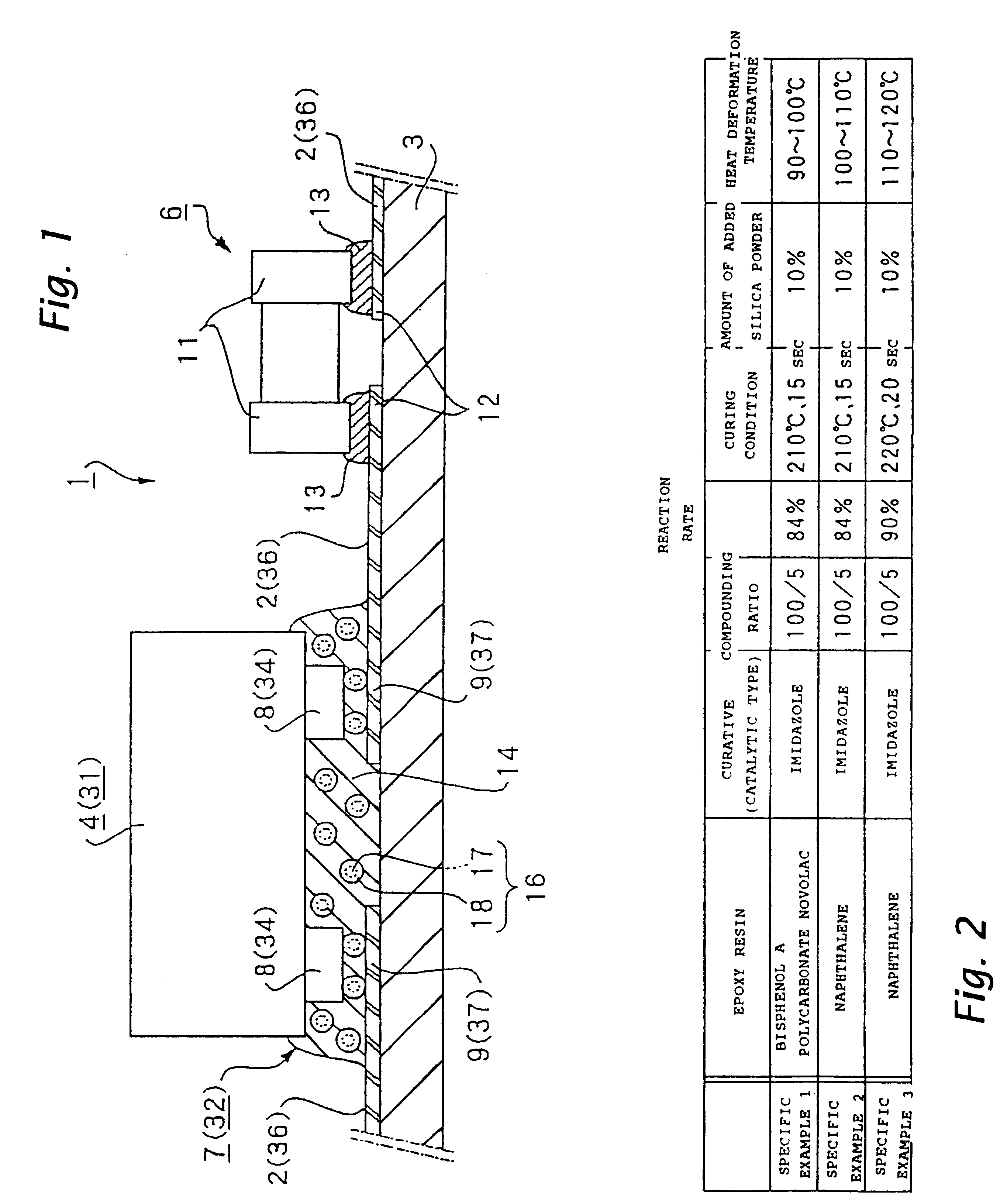Conductive adhesive with conductive particles, mounting structure, liquid crystal device and electronic device using the same
- Summary
- Abstract
- Description
- Claims
- Application Information
AI Technical Summary
Benefits of technology
Problems solved by technology
Method used
Image
Examples
second embodiment
FIG. 7 illustrates an embodiment of a liquid crystal device according to the present invention. The liquid crystal device 21 shown in FIG. 7 is formed by connecting a mounting structure 23 to a liquid crystal panel 22. An illuminating device such as a backlight and other associated devices are also connected to the liquid crystal panel 22 as required.
The liquid crystal panel 22 includes a pair of substrates 26a and 26b connected to each other via a sealing member 24. A liquid crystal is sealed in a cell gap formed between the substrates 26a and 26b. The substrates 26a and 26b are generally formed of a transparent material such as glass or synthetic resin. A polarizer 28 is secured to the outer surface of each substrate 26a and 26b.
Electrodes 27a are formed on the inner surface of one substrate 26a, and electrodes 27b are formed on the inner surface of the other substrate 27b. These electrodes may be formed in the shape of stripes, characters, numerals, or other proper patterns. The ...
third embodiment
FIG. 9 illustrates a portable telephone which is an embodiment of an electronic device according to the present invention. The portable telephone 40 comprises an antenna 41, a loudspeaker 42, a liquid crystal device 21, key switches 43, a microphone 44, etc., wherein these components are disposed in a case 46. In the inside of the case 46, there is also provided a control circuit board 47 on which a control circuit for controlling the above-described components is disposed. The liquid crystal device 21 described above with reference to FIG. 7 may be employed herein as the liquid crystal device 21.
In this portable telephone 40, signals input via the microphone 44 or key switches 43 and a signal received via the antenna 41 are applied to the control circuit on the control circuit board 47. According to the input data, the control circuit displays an image such as a numeral, a character, or a graphical pattern in the display area of the liquid crystal device 21. Then the data is transm...
PUM
 Login to View More
Login to View More Abstract
Description
Claims
Application Information
 Login to View More
Login to View More - R&D
- Intellectual Property
- Life Sciences
- Materials
- Tech Scout
- Unparalleled Data Quality
- Higher Quality Content
- 60% Fewer Hallucinations
Browse by: Latest US Patents, China's latest patents, Technical Efficacy Thesaurus, Application Domain, Technology Topic, Popular Technical Reports.
© 2025 PatSnap. All rights reserved.Legal|Privacy policy|Modern Slavery Act Transparency Statement|Sitemap|About US| Contact US: help@patsnap.com



